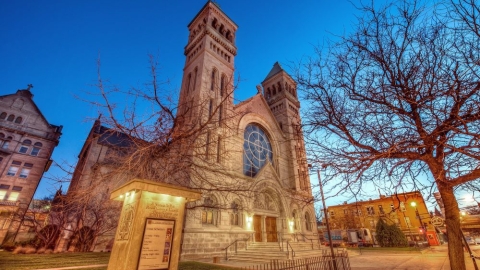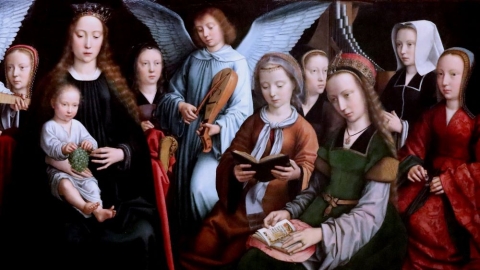Feast of St. Luke the Evangelist

Salus Populi Romani, painting attributed to St. Luke, on display at St. Mary Major Church
“Behold the blessing and humanity of our Saviour God has appeared to all men.” A disciple of St. Paul, it seems that the Third Evangelist proposed to shed light on the word of the Doctor of Nations.
Under the eye of Simon Peter, to whom the Father had revealed the Christ, the Son of the living God, Mark had the honor of giving to the Church the Gospel of Jesus, the Son of God. Matthew had already drawn up for the Jews the Gospel of the Messiah, Son of David, Son of Abraham. Afterwards, at the side of Paul, Luke wrote for the Gentiles the Gospel of Jesus, Son of Adam through Mary.
St. Luke completed his work by writing, in the same correct style as his Gospel, the history of the first days of Christianity, of the introduction of the Gentiles into the Church, and of the great labors of their own Apostle Paul.
According to tradition he was an artist, as well as a man of letters; and with a soul alive to all the most delicate inspirations, he consecrated his pencil to the holiest use, and handed down to us the features of the Mother of God. It was an illustration worthy of the Gospel which relates the Divine Infancy; and it won for the artist a new title to the gratitude of those who never saw Jesus and Mary in the flesh.
Hence St. Luke is the patron of Christian art; and also of the medical profession, for in the holy Scripture itself he is said to have been a physician, as we shall see from the Breviary Lessons. He had studied all the sciences in his native city Antioch; and the brilliant capital of the East had reason to be proud of its illustrious son.
From the book of St. Jerome, Priest, on Ecclesiastical Writers:
O Evangelist of the Gentiles, blessed be thou for having put an end to the long night of our captivity, and warmed our frozen hearts. Thou wast the confidant of the Mother of God; and her happy influence left in thy soul that fragrance of virginity which pervaded thy whole life and breathes through thy writings.
With discerning love and silent devotedness, thou didst assist the Apostle of the Gentiles in his great work; and didst remain as faithful to him when abandoned or betrayed, shipwrecked or imprisoned, as in the days of his prosperity.
Thy inspired pen taught us to love the Son of Man in His Gospel; thy pencil portrayed Him for us in His Mother’s arms; and a third time thou revealed Him to the world, by the reproduction of His holiness in thine own life.
Preserve in us the fruits of thy manifold teaching. Though Christian painters do well to pay thee special honor, and to learn from thee that the ideal of beauty resides in the Son of God and in His Mother, there is yet a more sublime art than that of lines and colors: the art of reproducing in ourselves the likeness of God.
This we wish to learn perfectly in thy school; for we know from thy master St. Paul that conformity to the image of the Son of God can alone entitle the elect to predestination.
Be thou the protector of the faithful physicians, who strive to walk in thy footsteps, and who, in their ministry of devotedness and charity, rely upon thy credit with the Author of life. Second their efforts to heal or to relieve suffering; and inspire them with holy zeal, when they find their patients on the brink of eternity.
(Source : Dom Guéranger – FSSPX.Actualités)
Illustration : Photo 152448993 / Salus Populi Rome © William Perry | Dreamstime.com

















